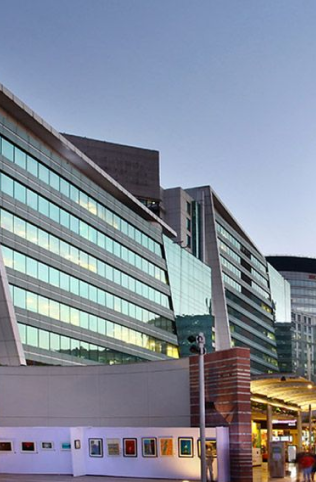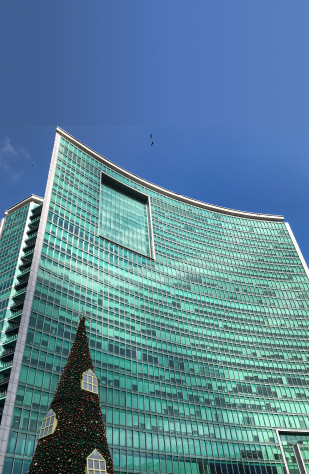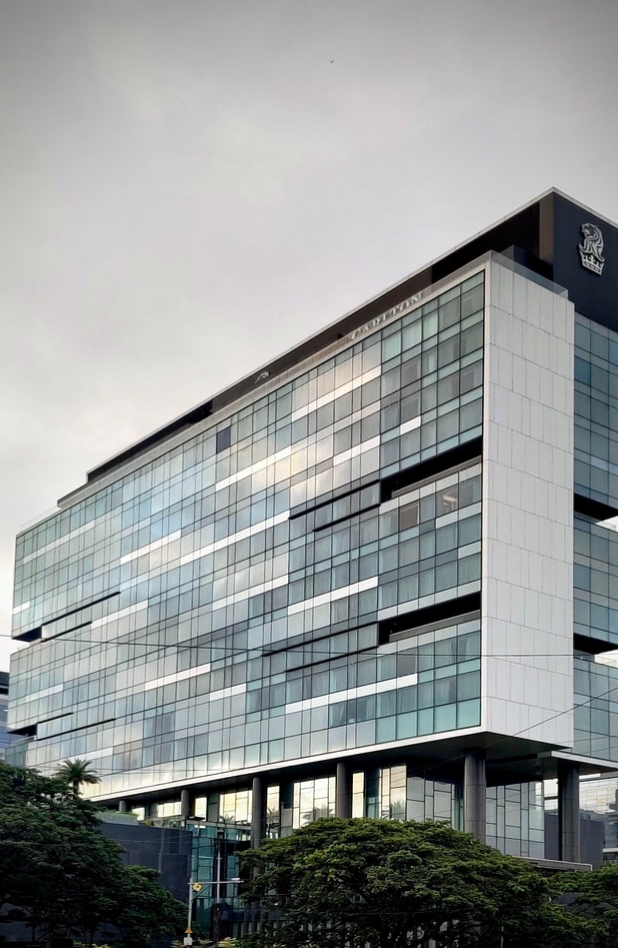Discover Workspace
Private
Office

Flexi
Desk

Dedicated
Desk

Day
Pass

Virtual
office

Meeting
Rooms

Popular Cities
A Few Words from
Happy Clients
Have a vacant space convert it to coworking office and list with HuntOffices?
30 Cities
40 Clients
600 Locations
6000 Workstations
Check out our
latest article

Why Enterprises are Choosing Furnished Offices in Hyderabad
Hyderabad is one of the fastest-growing business hubs in India. While the city was once only about culture, it is now about modern infrastructure, a cosmopolitan workforce, and an active business environment. From IT and pharmaceuticals to global capability centres to rapidly growing startups, businesses of all kinds are growing their operations in Hyderabad. With growth comes a transformation in how businesses view their office space. Long-term leases and significant capital expenditures on infrastructure design and installation simply do not work any longer under the rapid pace at which business operates. Companies want flexibility, convenience, and cost savings, and that is why furnished offices in Hyderabad are so popular. The Appeal of a Furnished Office in HyderabadA furnished office in Hyderabad is not just any office that is available to move into. It is all about operational agility and ease of use in which is all about speed and change in the marketplace. When businesses take space in a furnished office, they do not have to lose precious months of build-out waiting on furniture to deliver, infrastructure installation, or dealing with contractors. With a furnished office, they walk into a professional environment with modern furniture, high-speed internet, ergonomic chairs to sit properly, and professionally managed shared services from day one. This plug-and-play option with a fully furnished office is very valuable to businesses thatthat are entering Hyderabad for the first time. Entering a new market, with the ability to have an immediate presence, test the market, and grow, is often the most advantageous way of doing business in a sometimes inflexible real estate market. Why Enterprises Prefer Furnished Offices in Hyderabad for GrowthCompanies today are focused on productivity, collaboration, and creating a business environment that reflects well on their brand. Furnished office spaces in Hyderabad for companies also achieve this by providing:Scalability – The ability to increase or decrease office space as teams evolve and business requirements change.Prime Business Locations - By opening in the key business location of Hyderabad, namely HITEC City, Gachibowli, or Banjara Hills, your business will realise the benefits of prime business visibility, connectivity and an impressive business address.Business Continuity - Every aspect of the operations of the facilities management, from utilities, housekeeping, IT infrastructure, to security, will be maintained regularly by the property management team, so you may worry less about the details of the location and more about your business objectives.Work Experience - Open concept offices, collaborative lounges, and wellness facilities can all contribute to a professional environment conducive to employee performance and well-being.Together, this balance of flexibility and professionalism makes furnished office spaces in Hyderabad's business districts an appropriate option for enterprises that want to maintain flexibility as competition increases.Fully Furnished Office Space in Hyderabad: The AdvantagesA furnished office space in Hyderabad is not just about physical infrastructure - it offers an environmental ecosystem for an enterprise to grow in. Some benefits include:Immediate Move-In – No delays, no waitingComprehensive Facilities – All needs included in one package, from meeting rooms and training areas to the right technology and IT support. Professional Environment – An environment that allows businesses to strengthen their brand with clients and others through an enterprise feel. This is an attractive option for enterprises looking for a one-stop shop when balancing the desire for efficiency while optimising the overall cost for access to an excellent work environment.Hyderabad: A Strategic Location for EnterprisesAs an emerging business hub, Hyderabad adds to the value of furnished offices. Hyderabad provides: World-Class Infrastructure – Modern commercial complexes, reliable power supply and advanced telecom connectivity are available. Connectivity – Rajiv Gandhi International Airport, accessible highways, and the expanded metro are all easily accessible. Talent Pool – As a hub for professionals in IT, pharma, biotech and financial services, Hyderabad provides a strong workforce of qualified professionals. Business Ecosystem – The Presence of Fortune 500 companies, global technology companies and an expanding ecosystem of start-ups adds to Hyderabad as a business hub. Being located in such a hotbed gets a new enterprise operational efficiency and strengthens its ability to entice talent and build relationships. The Future of Enterprise Workspaces in HyderabadWith the continuing rise of hybrid and flexible work models, enterprises are leaving behind a tradition of formal office space. Furnished office space, being more flexible and equipped with an enterprise-like infrastructure, is leading the future of work arrangements in Hyderabad. Furnished office space allows businesses to: Adapt quickly to the needs of their workforce. Access to all computing technology to design an environment for success without an investment in technology. Improve work-life balance by ensuring a workplace in a desirable location and with furnishings that improve the experience of employees. Drive innovation and strategy, and not the management of the day-to-day operation of a facility. For enterprises looking to maintain a competitive edge in Hyderabad, furnished office space is not a choice but a decision to conduct business in a profitable way. Conclusions The willingness of enterprises to shift to furnished offices is a manifestation of the larger shift in how enterprises perceive office space today. The workplace is not just an office anymore. Business views are shifted to incorporating a workspace that helps grow culture and efficiencies of work. By considering furnished offices in Hyderabad for enterprises, they can have space that is scalable, cost-effective and prestigious without the risks and complications of traditional leasing contracts. Whether it is a self-funded startup testing new markets or a multinational wanting to expand its presence, furnished office space in Hyderabad provides offices that have become the perfect mix of sophistication and convenience. In today's dynamic workplaces, it is not hard to see why enterprises are leaning toward furnished office space - because it is not just about where you work, it is about how your workspace makes a difference to your success.
Read More
Top Budget-Friendly Serviced Offices in India for Small Businesses
In the modern world of business, flexibility and effectiveness have become the two most important factors in small and emerging businesses. In a traditional office environment, small businesses working in a simple corporate office may have a large upfront capital investment or a long-term lease and an oversized operational commitment-inhibiting and mitigating your enterprise, flexibility, growth, and agility. This is the tipping point where serviced offices have fundamentally altered the way we view work. Small businesses, in particular, find that serviced offices do not just offer a place to work, but develop a whole fractional ecosystem to support productivity, collaboration, and growth. The demand for serviced offices has been so great that affordable serviced offices in India deliver the essential business infrastructure, without the attached additional commitment and overhead.Why Small Businesses Prefer Serviced OfficesApart from considering cost, entrepreneurs and small business owners are challenged with a balance of providing a desirable working environment for clients, workers, and stakeholders. Serviced offices for small businesses meet and address the cost and process challenges very well, in addition to potentially creating excess available time, if the right serviced office is selected. They offer small business spaces to join expediency, whilst compromising nothing, they offer high-quality workspaces with all the imaginable spaces you would incorporate for working comfortably and ergonomically, with all the hardware/technology needed, on top of what you would expect, reception, housekeeping, and IT expertise. Serviced spaces present opportunities for companies to avoid the capital cost of office expenses or equipment, and instead refocus those resources on their business activities and capabilities. The flexibility to upsize or downsize according to the business has also played an important role in the servicing office models of proposition and the allure of agile businesses from small businesses and beyond.Value of Affordability without CompromiseOne of the significant values of serviced office work space options is that it employs a balance of cost and efficiency of organisation. Affordable serviced offices in India allow for the access and amenities of office space in a prime city location, at a fraction of the cost of a conventional office in a prime business district. Small businesses access a prestigious office location, top-quality meeting rooms, connectivity (for example, high-speed internet), and without the expense of any hidden fees that typically accompany a commercial property. This simply allows small businesses and evolving companies to utilise financial capital towards talent, marketing, and innovation - and not commercial real estate.Prime Locations That Encourage GrowthLocation is everything to a company's professional position and image. Serviced office units for small businesses should be based on their prime business district location - whether Connaught Place (for New Delhi), HITEC City (for Hyderabad), or MG Road (for Bengaluru), and adjacent to business districts, government, and infrastructure connectivity. Also, viewability lends credibility to the business for small companies and facilitates getting to the client's office and partner meetings, while increasing employee satisfaction on their commute, and access to highways or rail increases employee satisfaction and productivity for all workers. Small businesses can choose the size, configuration, and length of service. From a small office to accommodate a lean team to an entire floor for a growing business, the size of the space can be adaptable. This flexibility is an important aspect to analyse, as growth curve changes are unknown. Some startups have their growth accelerated through a funding opportunity, while in other instances, the business desires to grow into the allocated space based on a feel and/or contractual activity. The use of serviced offices allows businesses to transition as a company expansion without the labour-intensive physical move, or upgrading the infrastructure, and associated costs. Professional Infrastructure and Support Services The typical serviced office goes beyond providing flexible workstations for small businesses; they also create. The serviced office provider provides tenants with different workplace amenities to greater support their work. Meeting rooms with all necessary technology, conference rooms, breakout space, business lounge, operational support, for both tenants and clients. As is becoming commonplace, the provider is also starting to provide tech solutions, such as technology apps for reserved services, and booking of concierge support through the same application. For small businesses, these amenities help level the playing field against larger companies--giving you the look and feel of a professional business experience that appears efficient to your clients, other companies and stakeholders. You can also remove the effort of hiring someone for you to support your operationally through services like IT troubleshooting, reception, and cleaning services. Building a Collaborative CommunityAnother intangible benefit to affordable serviced offices in India is having a sense of community. Small businesses co-located in serviced offices can take advantage of the ability to collaborate and network, and share ideas. These new professional relationships can deepen and evolve into a partnership, a referral to clients or even mentorship, all in the interest of growing that is not as readily available in the office environment you might know. In particular, for entrepreneurs, this environment can be a valuable resource for knowledge and networks that could help you achieve long-term, sustainable businesses. The strategic advantage of serviced officesThe appeal for serviced offices is more than convenience and perspective--serviced offices represent a strategic opportunity in alignment with how work will change in the future--flexible, tech-enabled, employee-centred offices. Serviced offices are able to position smaller businesses in prime business areas, while creating a polished professional experience and amenities; serviced offices offer an opportunity for credibility and growth. As competition becomes sharper, and companies/culture around work becomes more traditional, businesses that are nimble and more efficient will be positioned better to thrive. Accordingly, serviced offices offer an environment for organisations to continue to be as nimble as possible, with low costs first in mind. ConclusionAs affordable serviced offices gain momentum as a category of workspace in India, it is a monumental change in how small businesses are able to define and utilise workspace. Small businesses are no longer tethered to costs and long-term leases to find workspace. Countless service offices provide cost-efficient, flexible, and modern professional services; small businesses can now be rid of the previous legacy systems into a more agile and growth opportunity. For entrepreneurs who are looking for efficiency and prestige--without concessions--serviced offices for serviced companies are tasked with being the only way decision-making is possible moving forward.
Read More
Why Serviced Offices Are the Smartest Choice for Startups in Bangalore
The Indian startup ecosystem has never been so robust, with Bangalore at its epicentre - known as the Silicon Valley of India. With a very rich talent pool, a large investment community and a culture of innovation, India has become a favoured launchpad for entrepreneurs. That being said, there is usually one thing that stalls startups: finding someone to build out the type of office space that fits their needs and expects them to pay for it. Traditional offices come with long-term lease contracts, large cash outflows, along headaches in operations, none of which are typical of young startups. A serviced office for startups changes the scenario entirely. While a traditional office comes with barriers, serviced office options provide desks in fully-furnished workplaces with flexible lease terms, amenities and access to premium locations, making serviced offices increasingly a natural fit for young companies. Let's take a look at how using a serviced office is both a financially viable as well as strategically viable option for first-generation startups in Bangalore.The Rising Appeal of a Serviced Office for StartupsAgility is everything when you're a startup. Markets can change quickly, and there will always be a reason to expand, downsize or pivot to stay in line with the market. A serviced office for startups provides the antidote to a large up-front investment in an office space and an investment in a long-term lease contract. Instead of buying/ renting and self-furnishing office space, upgrading technology and renting or paying for maintenance costs, startup founders can simply walk into a serviced office that is already furnished and ready to go. Because serviced offices are offered as plug-and-play solutions, they allow startup founders to focus primarily on starting and growing a business, without the concern of managing an operational overhead. In fields where time-to-market is important, this model provides the ultimate value.Why the Best Serviced Office in Bangalore MattersNot all office buildings are the same. While being flexible is a great selling point, the things that provide value to a business are that a workspace adds to the overall appearance and functionality of work getting done. For a startup to impress potential customers or late-stage investors, it would be of prudent decision to select the best serviced office in Bangalore. Specific business districts in Bangalore, like Whitefield, Koramangala or the Central Business District, have high-quality serviced office spaces that provide more than a meeting room or a desk to work. These serviced offices combine quality architecture with high-speed internet, LCD conferencing, ergonomic workstations, and concierge-level service. This is an optimal environment for individuals and companies to improve their professional image — something that can be extremely critical in a startup's early life cycle.Serviced Office for a Startup in Bangalore: A Catalyst for GrowthOne of the greatest advantages in choosing a serviced office for a startup in Bangalore is the access to an ecosystem beyond just a desk and internet. Many serviced office companies curate opportunities for networking, community and collaboration events with members to bring together entrepreneurs, late-stage investors, and leaders and thinkers of industries. For startups, this ecosystem can only prove valuable, as it opens possibilities for collaborations, mentorship, and/or partnerships that can take months to establish. Collaborating in a shared space with similarly minded individuals also unleashes creativity and innovation—a key part of Bangalore's thriving startup ecosystem. Yet more than this, serviced offices also often have administrative functions included in the price—maybe a receptionist, IT support, and even HR functions. For a start-up loan team, you will get significant time and resources savings, provided to your option you need to support your business on a regular basis, guaranteeing a smooth, professional operation by the level of service you require.Cost Efficiency Without Compromising QualityOne of the biggest misunderstandings is that serviced offices at the upper end of the market are completely unaffordable. Quite the opposite is the case. Start-up companies like yours will benefit from knowing that the fee is consistent from month to month, inclusive of rent and all utilities, maintenance, and support services—and importantly, no hidden or unexpected additional charges, which are often the case with traditional office-type arrangements. What's more, the fact that you will be able to "up-size" and "down-size" whatever the need for office space in the same serviced office means you will only pay for what you need. Basically, you will still have a similar corporate office set-up, but at a fraction of the cost compared to a conventional office lease. This means start-up customers now have the financial capability to ballast themselves against their corporate counterparts.Strategic Locations for Visibility and ConvenienceAnother benefit of choosing the best serviced office in Bangalore is the advantages of the location. You will get the benefit of being in a prime business area, which will benefit start-ups as you try to gain credibility in the area, for a good profile for clients to access, etc. For example, if you are an IT company starting in Whitefield, there are numerous advantages to being in the same location as large corporates, and for fintechs, the best office area will be in the CBD to be around networks of financial institutions. Location also plays into recruitment. Young professionals will prefer to work for a start-up that is located in a cosmopolitan address that is very easy to access. In an ever-competitive hiring environment, this could make all the difference.Looking Ahead: Serviced Offices as the Future of Startup WorkspacesThe trend toward premium serviced offices in Bangalore is only set to grow in 2026 and beyond for companies that require flexible offices. Today's start costs will always be about speed, efficiency and image—all by you're likely to just see off serviced offices. It seems to be a global trend in terms of location and workplace preferences, where ideas around flexibility and experience will increasingly trump ideas of ownership and permanency. For start-ups in Bangalore today is the question is no longer "should I think about a serviced office," but all about determining which provider/vendor and which location is most suitable for their growth goals, if not long-term plans.ConclusionThe journey of a start-up is all about change, ambition, and maximising every resource. A serviced office meant for start-ups holds great growth potential in terms of a balance between: bluntly of flexibility, cost-effectiveness and prestige. For entrepreneurs in India/ Bangalore location, it is an investment for your party's credibility, and also convenient to do business in, but at a manageable cost, a start-up loan. In a city full of culture based on synergies, pace and innovation, a serviced office for a start-up is just what you need to make your ideas tangible enterprises, and the enterprises lead in your industry space.
Read More
How Coworking Space in Bangalore Are Redefining Work-Life Balance
Bangalore - known as the "Silicon Valley of India" - has historically been a forerunner of innovative thinking, technology, and modern business practices. In addition to Bangalore's global reputation as a hub for startups and IT companies, there has also been a quiet, yet profound change in how the people going to "work" every day are, and will, be functioning. More and more businesses, freelancers, and corporate teams are drifting away from the traditional office setting and are instead enjoying the breaking away from convention and the flexibility of working in a coworking space in Bangalore. What is unique about this change in convention is not simply the physical space. The core value of coworking spaces is to change the mindset of the "work-life balance" in one of India's most progressive cities.Why Work-Life Balance Matters More Than EverIn a time of constant connectedness, we have probably often merged time for work and personal, along with the added components of the unique stress, busyness, and traffic that life in Bangalore brings into the mix. Approximately 90% of conventional office environments do not create space for balance while considering the seriousness of work-life balance and mental health on productivity and productivity on mental health. Coworking space is changing the narrative. Coworking spaces are creating space for productivity, interaction, and community. This is achievable by offering accessible and unique locations with intentionally designed marked spaces and amenities that go beyond a basic desk and chair. Reclaiming time, effort, and most importantly, mental health, inside and outside of work.Choosing the Best Coworking Space in Bangalore: Beyond InfrastructureIf you are looking for the best coworking space in Bangalore, you should know that coworking is really so much more than just a contemporary design or a wi-fi connection. Coworking can help you improve your lifestyle while determining your career path:Here are some important considerations to keep in mind:Convenience: Whether it's Koramangala, Whitefield, or Indiranagar, it is much less stressful not to commute, as experiencing it is ultimately an expenditure of time, which the average person cherishes more than money, and the impact of commuting ultimately saves the time you were perhaps forced from family, week after week.Wellness: Essentially comfortable" are spaces with light, ergonomic workstations, and ambience that can create comfort that induces tiredness.Community: A vibrant community offers busy professionals numerous possibilities to connect, brainstorm, and collaborate with their coworkers with great ease.Flexibility: Whether utilising hot desks, private cabins, or collaborative space, conventional coworking spaces model a fundamentally flexible model of membership to suit how quickly individuals, teams, or companies can grow or evolve.You will ultimately find that the most robust coworking spaces are the ones that don't merely contain your work but actually enhance your overall lifestyle so you have the energy or resources to thrive in every aspect of your daily working and personal life.Coworking Space Near Bangalore: Expanding Access for ProfessionalsWhile people still put the urban core of cities at the top of their list, we've truly seen a trend of many professionals seeking a coworking space near Bangalore, specifically in areas of suburban growth. We are seeing professional workers transitioning to coworking spaces near Electronic City, Marathahalli, or one of the soon-to-be emerging suburban areas on the outskirts of Bangalore...while the large Indian metropolis experiences daily stressful traffic times.Why? Because of ease. A coworking space near home or closer to an emerging cluster of clients is simply more efficient. It is so simple for working professionals who are susceptible to distractive or stressful commuting to maintain productivity throughout the busy hours of the day and then be able to spend quality time with family in the evening. This is just one way in which coworking symbolises that it adds not only convenience but is also a viable route for us to pair productivity with living a life where we can live healthy life.The Human Side of Coworking in BangaloreWhat will truly differentiate between coworking spaces in Bangalore compared to anywhere else is the approach of interactions, placing each human (as well as the community) first. Many times, the coworking space itself will set up wellness sessions, networking events to mingle and find new relationships. There are also workshops where they go beyond a simple supply of legit workforce experience. You could wake up, start your morning with a yoga session. If you are sharing, you could enter a collaboration with some colleagues in your business to help and share experience at lunch. To complete the event, there could be a superb panel discussion in the evening.This is extremely attractive for workers as it supports a day that balances a good commitment to work hard, but also work smart in the pursuit of personal development and wellness. It is radical entirely from the lonely dead end and boring sameness of a traditional office (that is the most productive I can), but does not consider a human factor and is not anything more humane.Work-Life Balance Through Smart DesignA newer aspect that is transforming the work environment is the design philosophy behind the best coworking space in Bangalore; the ambience and feeling of the interiors are not simply modern but have been deliberately considered in design to facilitate creativity and minimise stress. The individual zones are intentional quiet work spaces, informal lounges, cafes to unwind, and board rooms furnished with great technology, but also feel welcoming.The environment causes our states of mind. A professional in a comfortable and inspiring environment is not likely to seethe over or be bogged down by the operational stress of professionalism. Coworking spaces in Bangalore are showing that if space is intentionally planned, it could be the impetus for healthier work practices.A Future Where Flexibility Defines SuccessThe shift towards coworking is not a fad; it is indicative, based on our priorities of both personal and work-life, of where we reside. Beyond the financial benefit that prohibits businesses from ever going back to conventional office space or long-term leases (or life for that matter), coworking can be a means of liberation for individuals; a choice of when, where to work and how to go about their lives. With each day and breath, it is becoming more evident that those who see themselves as living balanced lives in their professional environments are choosing coworking as the healthy choice. While some still hold onto their work lives pre-COVID, those walls of resistance are fading away—and coworking in Bangalore is fast becoming the new preferred choice of where one works, whether you are the founder of an organisation, an independent consultant, or a corporate member of a larger team. The opportunity of coworking in Bangalore could simply be the difference between going from a sustainable development path versus drowning in fatigue, burnout, or post-COVID life.Final Thoughts: Why Coworking Works for BangaloreBangalore has been the city of the innovative mindset. The evolution of coworking spaces is yet another show of fair adaptability. A thoughtfully chosen coworking space in Bangalore provides the best of both worlds: a next-generation workspace experience and the amenities of a humane work culture. Whether you need the best coworking space in Bangalore to establish your professional identity or are simply looking for coworking space near Bangalore to help you minimise your commute time, there are endless possibilities. Ultimately, however, coworking in Bangalore is not about where one works; it is about how one wants or chooses to live, where work-life balance very well may be the best investment today.
Read More
























